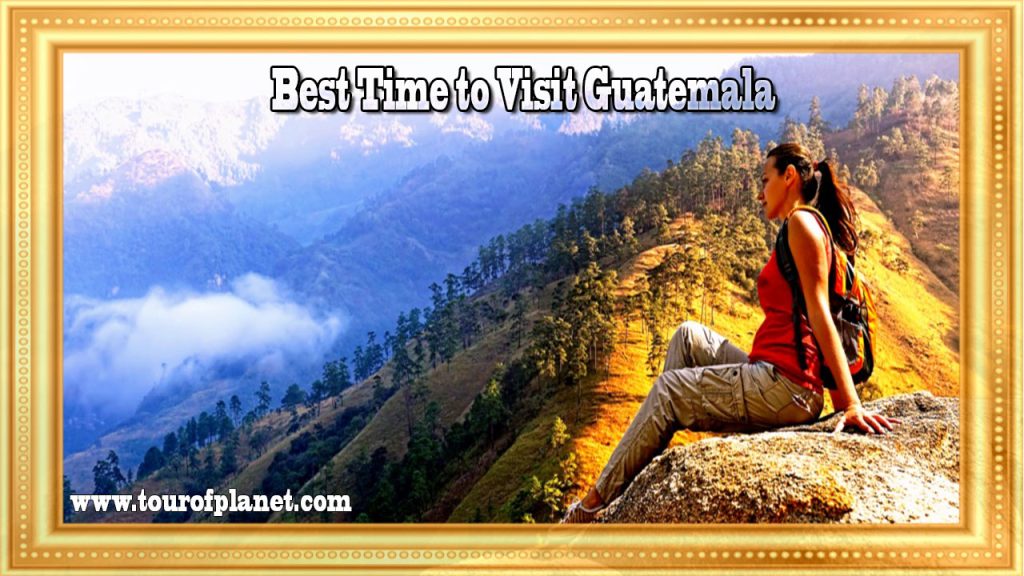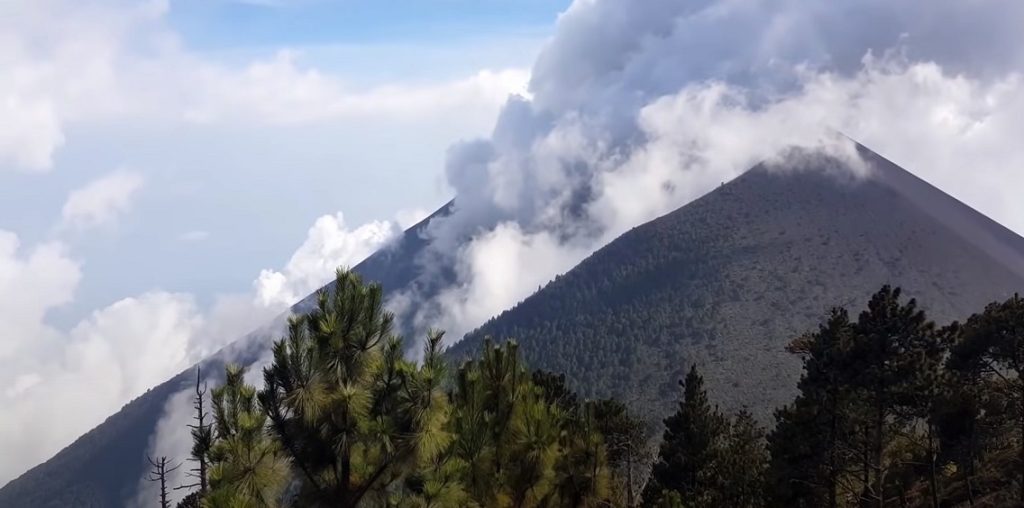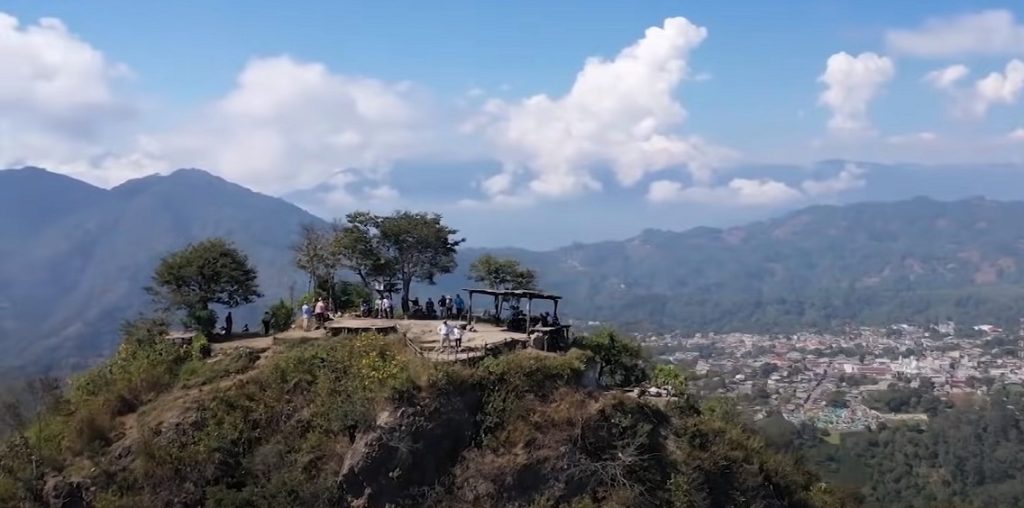Guatemala, a mesmerizing country nestled in the heart of Central America, boasts a colorful history, diverse culture, and breathtaking landscapes that have captivated travelers for centuries. From its ancient Mayan ruins to its vibrant festivals, there is no shortage of intriguing facts that make Guatemala a unique and enchanting destination. In this article, we will explore 50 fascinating facts about Guatemala, shedding light on its rich heritage, natural wonders, and vibrant traditions. So, let’s embark on a journey to discover the hidden treasures of Guatemala.
1. Guatemala’s Geographic Diversity
Guatemala is characterized by its diverse topography, encompassing volcanoes, mountains, rainforests, and coastal plains. It is home to over 30 volcanoes, with three of them still active: Pacaya, Fuego, and Santiaguito.
2. The Mayan Civilization
The ancient Mayan civilization thrived in Guatemala from 2000 BC to 1500 AD. Today, numerous Mayan ruins, such as Tikal, El Mirador, and Yaxha, offer a glimpse into their architectural and cultural legacy.
3. Tikal: A UNESCO World Heritage Site
Tikal, the most famous Mayan city, was a significant cultural and political center during the Mayan Classic period. It is renowned for its towering pyramids, temples, and impressive plazas.
4. Lake Atitlán: A Breathtaking Wonder
Nestled in the Guatemalan Highlands, Lake Atitlán is a stunning volcanic lake surrounded by picturesque villages and mountains. It is often considered one of the most beautiful lakes in the world.
Guatemala’s Official Language
Spanish is the official language of Guatemala, and the majority of the population speaks it. However, there are also 23 Mayan languages spoken across the country.
A Land of Eternal Spring
Due to its varied altitude, Guatemala enjoys a mild climate known as the “Land of Eternal Spring,” with temperatures averaging around 72°F (22°C) throughout the year.
The Quetzal: Guatemala’s National Bird
The resplendent quetzal, with its vibrant green and red plumage, is Guatemala’s national bird. It holds cultural significance and is associated with freedom and prosperity.
The Ancient Mayan Calendar
The Mayans developed a complex calendar system, consisting of the Tzolk’in (sacred calendar) and the Haab’ (civil calendar), which intertwined to form an intricate calendar round of 18,980 days.
Rich Handicraft Traditions
Guatemala is renowned for its vibrant handicrafts, including colorful textiles, intricate weavings, and exquisite pottery. Each region showcases unique designs and techniques.
10. The Charming Antigua Guatemala
Once the capital of Guatemala, Antigua is a UNESCO World Heritage Site known for its well-preserved Spanish Baroque-influenced architecture and cobbled streets.
11. Semana Santa: A Celebratory Extravaganza
Antigua’s Semana Santa (Holy Week) is a spectacle not to be missed, featuring elaborate processions, vibrant carpets made of flowers, and religious fervor.
12. The Ruins of Iximché
Iximché, a pre-Columbian archaeological site, served as the capital of the Kaqchikel Maya kingdom. Today, it stands as a significant historical and ceremonial center.
13. The Guatemalan Flag
Guatemala’s flag consists of three vertical stripes: sky blue on the outer edges, and white in the center, featuring the country’s coat of arms.
14. The Traditional Guatemalan Dish
A staple in Guatemalan cuisine, “Pepián” is a hearty, spicy stew made with meat, vegetables, and a blend of aromatic spices.
15. The Active Volcano of Pacaya
Pacaya is one of Guatemala’s most active volcanoes, attracting adventure seekers who can hike up to its lava fields and witness the volcanic activity up close.
16. The Mayan Ball Game: Pitz
The ancient Mayans played a ball game called Pitz, where players used their hips to hit a rubber ball through stone hoops. This ritualistic sport held significant cultural and religious importance.
17. The Quiriguá Archaeological Site
Quiriguá is another UNESCO-listed Mayan site, known for its impressive stelae and zoomorphic sculptures, providing valuable insights into Mayan history.
18. The Cacao Legacy
Guatemala’s history is intertwined with cacao, as the Mayans considered chocolate a sacred drink. Today, Guatemala produces high-quality cacao beans that contribute to the world’s chocolate industry.
19. A Diverse Flora and Fauna
Blessed with abundant biodiversity, Guatemala boasts over 700 species of birds, including the colorful resplendent quetzal, as well as jaguars, tapirs, and numerous reptiles.
20. The Sacred Book of the Maya
The “Popol Vuh” is an ancient Mayan text that recounts the creation myth, the origin of humankind, and tales of gods and heroes.
21. The Guatemalan Highland Markets
Indigenous markets in Guatemala’s highlands, such as Chichicastenango, are a sensory delight, offering a kaleidoscope of colors, aromas, and traditional products.
22. The Chichicastenango Church
Santo Tomás Church in Chichicastenango is a blend of Mayan and Catholic traditions, where colorful ceremonies take place amid the scent of incense.
23. The K’iche’ Mayan Language
The K’iche’ language, a Mayan dialect, holds the distinction of being the second-most widely spoken indigenous language in Guatemala.
24. The Legend of El Sombrerón
El Sombrerón is a mythical creature in Guatemalan folklore, a mischievous night wanderer who serenades young women with his guitar.
25. The Sacred Cenotes
Cenotes, natural sinkholes filled with crystalline water, are prevalent in Guatemala, with some Mayans considering them sacred portals to the underworld.
26. The Guatemalan Coffee Tradition
Guatemala is renowned for its premium coffee, grown in volcanic soil, and exported worldwide as some of the best Arabica coffee.
27. The Magnificent Quiriguá Stelae
Quiriguá’s stelae, large stone monuments adorned with intricate carvings, provide valuable information about the rulers and history of the city.
28. The Dance of the Deer
The “Danza del Venado” is a traditional dance that portrays a deer hunt, performed during various indigenous festivals.
29. The Guatemalan Independence Day
On September 15th, Guatemalans celebrate their Independence Day with colorful parades, dances, and lively festivities.
30. The Livingston Garifuna Culture
Livingston, a unique town on Guatemala’s Caribbean coast, is known for its Garifuna culture, with its vibrant music, dance, and cuisine.
31. The Giant Kite Festival
On All Saints’ Day (November 1st), the “Barriletes Gigantes” festival takes place in Santiago Sacatepéquez, featuring enormous kites flown to honor the deceased.
32. The Tropical Rainforests (Continued)
Guatemala’s rainforests are home to a diverse array of flora and fauna, making them an ecological treasure trove. With protected areas like the Maya Biosphere Reserve and Sierra del Lacandón National Park, these lush forests play a crucial role in conserving the country’s natural heritage.
33. The Guatemalan Jade Legacy
For the ancient Maya, jade held immense spiritual significance and was considered the “stone of heaven.” Today, Guatemala is renowned for its high-quality jade artifacts and jewelry.
34. The Colorful Huipil Garments
The traditional Mayan clothing, known as “huipil,” showcases intricate patterns and vibrant colors, each design reflecting the cultural identity of its region.
35. The Stunning Semuc Champey
Nestled in the heart of the Guatemalan jungle, Semuc Champey is a natural limestone bridge adorned with turquoise pools that create a mesmerizing spectacle.
36. The Pacific and Caribbean Coasts
Guatemala is unique in having both Pacific and Caribbean coasts. The Pacific coast offers surfing, beach resorts, and wildlife-rich mangroves, while the Caribbean coast boasts coral reefs and Garifuna culture.
37. The Rich Indigenous Heritage
With over 40% of the population identifying as indigenous, Guatemala’s culture and traditions are deeply rooted in the heritage of various Mayan ethnic groups.
38. The Sacred Fire Rituals
Mayan communities continue to practice ancient rituals, including the sacred fire ceremony, to honor their ancestors and seek blessings from the gods.
39. The Quetzaltenango Theater
Also known as “Xela,” Quetzaltenango is home to Guatemala’s oldest theater, Teatro Municipal, which has been a center for cultural performances for over a century.
40. The Guatemalan National Palace
Located in Guatemala City, the National Palace is an architectural masterpiece that houses the government offices and offers guided tours to visitors.
41. The Ancient Stele at Takalik Abaj
Takalik Abaj, an ancient Olmec and Mayan site, is adorned with colossal stone steles and sculptures, providing valuable insights into the pre-Columbian era.
42. The Giant Ceiba Trees
Ceiba trees are considered sacred by the Maya and are believed to connect the earthly realm to the spiritual world. They can be found throughout Guatemala, towering over the landscape.
43. The Folk Music and Marimba
Marimba music, a traditional Guatemalan folk genre, is often played during festivals and celebrations, creating a lively and festive atmosphere.
44. The Day of the Dead Celebrations
On November 1st and 2nd, Guatemalans celebrate “El Día de los Muertos,” honoring their deceased loved ones with colorful altars, flowers, and traditional foods.
45. The City of Cobán
Cobán, the capital of Alta Verapaz, is famous for its pleasant climate, lush landscapes, and as the gateway to Guatemala’s remote northern regions.
46. The Archeological Site of Aguateca
Aguateca is a lesser-known but significant Maya site, accessible only by boat, offering an adventurous journey to explore its well-preserved ruins.
47. The Multicolored Chicken Buses
Chicken buses, repurposed U.S. school buses painted in vibrant colors, are a ubiquitous sight in Guatemala, serving as the country’s main mode of transportation.
48. The El Mirador Basin
El Mirador Basin is a remote and largely unexplored region, housing the ancient city of El Mirador, one of the largest Mayan sites ever discovered.
49. The Santa Catalina Arch in Antigua
The iconic Santa Catalina Arch in Antigua is a picturesque landmark that once connected a convent to a school, offering stunning views of the surrounding volcanoes.
50. The Strength of Guatemalan Resilience
Despite facing challenges, Guatemalans exhibit remarkable resilience, preserving their rich cultural heritage and natural wonders, making Guatemala an unforgettable and inspiring destination.
Conclusion
As we conclude our journey through the 50 fascinating facts about Guatemala, we have delved into a realm of diverse landscapes, ancient civilizations, vibrant traditions, and warm hospitality. From the towering Mayan ruins to the colorful handicrafts and breathtaking natural wonders, Guatemala offers an enriching and unforgettable experience for every traveler. Whether you seek adventure, cultural exploration, or simply wish to revel in the splendor of its landscapes, Guatemala stands ready to captivate and enthrall you with its timeless allure. So, pack your bags and embark on an adventure to uncover the hidden treasures of this Central American gem: Guatemala.


